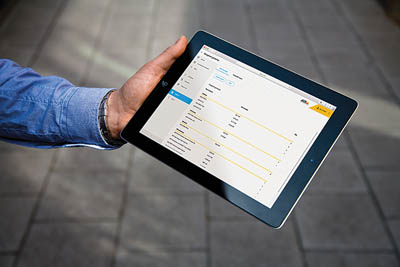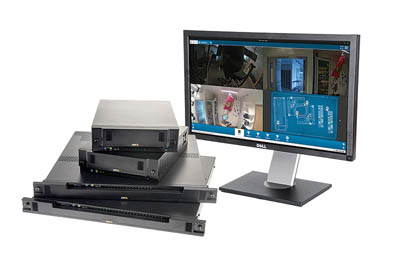Advances in security technologies are often highlighted for the benefits and added value they offer end users. While this is important, it must also be remembered that smart technology can be of great benefit to integrators too. The growth of service-based offerings, such as software-as-a-service (SaaS), service provision using cloud-based infrastructure or hybrid solutions with additional support and remote connectivity can also deliver added value for those designing, specifying and implementing smart systems.
When considering the benefits of smart systems, the primary consideration is often how the technologies will assist businesses and organisations. Many users are seeking solutions which offer tangible efficiencies to their day-to-day operations. Given the fact that the end user is the final customer, it is obvious anything which enhances the benefits they receive will ensure the system not only meets, but also exceeds, their expectations. This ensures they receive a return on investment, thereby justifying the purchasing decision.
Of course, smart technologies work in many different ways, and often the resultant systems can be just as attractive to integrators. Smart technologies make the implementation of systems more efficient, and as a result those deploying the technologies are also able to enjoy the added value on offer.
Traditionally, many of the tasks involved in the design and specification of a smart system can be time-consuming. It must also be remembered that integrators need to dedicate resources and time to creating tenders long before the actual contracts have been awarded. The result can be time spent which equates to no return on that hard work. This is one scenario where the use of service-based smart technology can help.
Designing smarter
Preparing documentation for a quote or tender can be a prolonged and labour-intensive task. The first issue is carrying out the risk assessment and subsequent system design, ensuring the solution can meet the operational requirements. This can involve a number of revisions to documentation, experimenting to discover the most cost-effective way to deliver the required degree of protection.
 Once the integrator is sure all vulnerable areas are covered, the next stage is making certain the selected devices can deliver what is expected. The specification of each individual device must meet the needs of the area in which it is to be deployed, including ensuring lens attributes and resolution are sufficient to ensure the correct coverage. Often selecting appropriate products from a manufacturer’s range can take hours as specifications need to be checked and rechecked.
Once the integrator is sure all vulnerable areas are covered, the next stage is making certain the selected devices can deliver what is expected. The specification of each individual device must meet the needs of the area in which it is to be deployed, including ensuring lens attributes and resolution are sufficient to ensure the correct coverage. Often selecting appropriate products from a manufacturer’s range can take hours as specifications need to be checked and rechecked.
After these critical calculations, integrators must ensure they’ve considered all the necessary peripheral devices such as mountings, housings, fitting kits, connectors, etc.. Even small errors at this stage can result in a lot of work and calculations needing to be repeated.
Once the contract is won, another stage of documentation needs to be completed. This can often be more time-consuming than the initial specification, and errors at this point can be problematic for integrators. Generally these documents will be used in the field, during the installation, for positioning, set-up and commissioning. Omissions or mistakes can result in on-site time being wasted, and this soon eats into the profit margin of a contract.
A full report needs to be created with precise information for the installation process. This will include ensuring the angles of view are as calculated, with detailed information specified in writing so the placement of devices can be double-checked once the system is installed. The allocation of addresses for devices also needs to be planned in advance, as trouble-shooting on-site can be both frustrating and time-consuming. There will also be a need to implement procedures to ensure the right addresses are allocated to the right devices.
Finally, a report for the end user must be generated, including the performance specifications, device details, various addresses, authentication information, etc..
Given the proliferation in smart technology, simplifying the paper trail would be a benefit for most integrators and installers. This is something Axis Communications has addressed, via its innovative and intuitive Site Designer tool.
Site Designer
AXIS Site Designer is a software-based tool specifically created to assist integrators and installers when designing video surveillance systems. The intuitive tool simplifies the entire process, streamlining the workflow to ensure a higher level of efficiency, which in turn leads to enhanced profitability. The software not only makes the design of projects faster and easier, but it also ensures that any revisions or changes are simple to implement.
 The AXIS Site Designer software works with systems based upon Axis devices, and also includes support for projects making use of open platform VMS software from the company’s partners. It is an add-on which helps efficiently manage a wide range of projects, covering all eventualities from large and complex multi-site campus systems with failover and advanced rules-based analytics, through to simple solutions for SMEs which make use of a few cameras and a basic recording package.
The AXIS Site Designer software works with systems based upon Axis devices, and also includes support for projects making use of open platform VMS software from the company’s partners. It is an add-on which helps efficiently manage a wide range of projects, covering all eventualities from large and complex multi-site campus systems with failover and advanced rules-based analytics, through to simple solutions for SMEs which make use of a few cameras and a basic recording package.
AXIS Site Designer takes an intuitive approach, filtering products by specification and performance criteria to exactly match the needs of an operational requirement. The filtering ensures products and devices which cannot deliver the required performance levels are not specified in error, simplifying the task for integrators by removing any unsuitable devices.
The time savings mean engineers can create the right system to fit the exact operational requirements and needs of a client in less time. Once the product selectors have helped find suitable cameras and other devices for each location based on performance, assistance is offered to decide the ideal placement of each based upon the desired field of view.
Once the optimal camera placement has been decided, the Site Designer application lists the various mounts and other accessories which will allow the camera to be installed to deliver the desired field of view.
Once the physical elements of the system have been inputted, the software can then assist in creating a plan which includes system storage and bandwidth requirements. This saves integrators from carrying out numerous calculations. Often this can be a considerable drain on time as it may be necessary to redo the calculations several times in order to assess the most cost-efficient approach.
Tweaking the results is simplified, enabling accurate projections to be made for a variety of possible scenarios. This accelerates the specification process and also reduces the chance of incorrect calculations which may be due to human error.
To ensure a high degree of accuracy when making the calculations, Site Designer assesses the recording solution options using algorithms based on extensive analysis of surveillance video, and measurements made to determine the performance of different camera models. Scenarios can be created which ensure the figures are realistic. These allow camera characteristics to be adjusted, such as whether the device is internal or external, the expected amount of motion in a scene, the level of illumination in the viewed area, etc..
These scenarios can be edited with ease, enabling comparisons to be made. For example, it is easy to calculate the savings made if an additional IR illuminator is added, as the difference in required bandwidth and storage capacity can be assessed with and without the lighting.
The software additionally enables the selection of other compatible devices such as illuminators, encoders, access control devices, radar detectors, etc.. This ensures a complete solution can be specified from one single source.
With the specification completed, the AXIS Site Designer allows reports to be generated. These include a sales quote for the customer, a materials list to ensure the correct parts are ordered, a bandwidth and storage report and installation guidelines. However, this isn’t the limit of what the software can offer.
Integrators can add information such as IP addresses for devices, network configurations, etc.. When the solution is implemented, these can be automatically transferred to the system, saving time and eliminating problems which may be caused by human error.
AXIS Site Designer can also store a library of designs, allowing project templates to be created. These are ideal for systems with multiple satellite sites such as retail, utilities, etc.. Engineers can manage multiple projects, either off- or on-line, efficiently revising specifications as necessary.
In summary
Much of the focus on smart solutions considers the additional benefits for the end user, and rightly so: they are the ones who pay for the system. However, smart systems do not represent a one-way street, and there are many benefits which make the process of specification and installation simpler and more efficient for forward-thinking system integrators.







